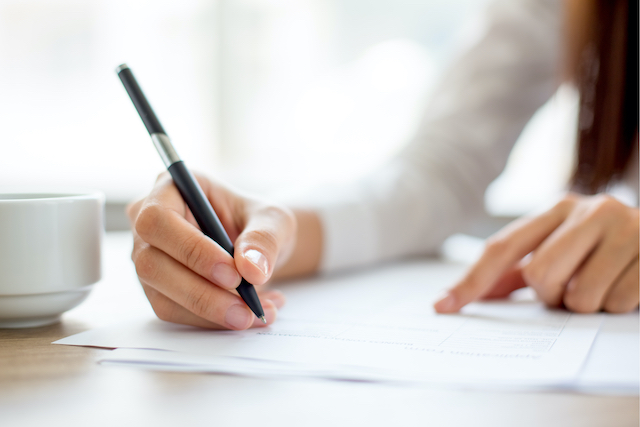
Authors often discuss how reading improves your writing. However, there’s a big difference between passive and active reading, and if you’re serious about using published novels to improve your writing, you must learn how to do the latter.
When you read passively, you consume a novel as entertainment—you’re trawling through without paying attention to detail. This lets you form a broad judgement (“this is great!”).
Active reading involves a specific focus on an author’s craft. It is to passive reading what fly-fishing is to trawling. Active reading encourages your judgement to be precise (“this is great because the chapter endings created lots of suspense!”).
Why Read Actively?
Active reading lets you discover why successful novels work. Once you learn how published authors deal with writing, you can apply the same techniques to your novel.
Active reading also develops your evaluation skills. This is crucial when it comes to self-editing your novel.
Note Taking:
Now, I hate to sound like an English teacher, but you’ll need to take notes. This is because writing notes turns on the objective part of your brain. It’ll encourage you to analyse the story objectively rather than merely consume it—which is the whole point of active reading. Some pointers on taking notes:
- Bullet points are excellent, as they encourage brevity and clarity.
- Avoid re-stating what happens in the story. For instance, don’t write: John walks into the scary house.
- Instead, focus on the techniques. For instance, do write: suspense is created through the chapter closing with John walking into the dark house.

How to Read Actively:
Select one narrative element (and only one!) and examine how a story uses it. For instance, if I’m struggling with my chapter endings, I would actively read a novel to figure out how established authors write their chapter endings, and probably only read the chapter endings.
For each section below, I’ll give you some things to look for and an easy, practical activity to hone your active-reading abilities. By the time you’ve completed all of these activities, you’ll be an active reading pro!
Dialogue:
Good dialogue is like a functioning sewerage system: you don’t notice it’s there. When dialogue (or your sewerage system) goes wrong, however, you definitely notice. It can take a while to learn how to write natural-sounding dialogue, and that’s why analyzing the masters will help you develop.
Focus on:
- Speech Signatures: do some characters have unique catch-phrases, speech mannerisms or other distinct verbal patterns?
- Integration: how is the dialogue incorporated into the scene? Is the dialogue essentially a transcript, or is it interspersed with actions?
- Breath Units: a breath unit is the number of syllables a person must say before taking a breath (i.e. when they reach a full stop or comma).
Let's look at breath units in more detail. For instance, take this paragraph: Hi there. My name’s Harley Richard. I enjoy riding motorcycles, and I also appreciate a good stroll in the moonlight.
Broken up, the breath units are: 2 (Hi there – 2 syllables); 6 (My name’s Harley Richard – 6 syllables); 9 (I enjoy riding motorcycles – 9 syllables); 15 (and I also appreciate a good stroll in the moonlight – 15 syllables).
Breath units must have good variation, or the dialogue will sound monotonous. They must also be achievable (aim for fewer than 20) or the dialogue will cause readers to run out of breath. Having realistic breath units is key to creating realistic dialogue.
Try this:
- Grab a novel.
- Flip to a random page.
- Find the start of a conversation.
- Read the dialogue on this page out loud, and only read the dialogue – ignore anything outside quotation marks (bonus points for using quirky voices).
- After you’ve read a page or so, stop. If you overheard this conversation in a coffee shop, would it seem natural, and not stilted? If so, write 4-6 bullet points explaining why it worked.
Foreshadowing:
Foreshadowing is a vital element in stories with twists and mystery. It’s easier to work out how an author used foreshadowing on your second read of a novel, so only actively analyse foreshadowing on your second read.
Focus on:
- Chekov Guns: to quote Anton Chekhov: “If you say in the first chapter that there is a rifle hanging on the wall, in the second or third chapter it absolutely must go off.” What ‘Chekov Guns’ are present in the novel you’re studying? Are physical objects ‘planted’ in a story early on that are later used in important ways?
- Symbolism: Does Jimmy notice ravens circling overhead before he finds his brother murdered in an apartment? Is there an air of unease (think: baby strollers left unattended on a train platform; gloomy weather; meat being butchered) just before a catastrophe?
- Clues: This is more mystery-specific, but are there smaller clues you missed during your first reading?
Try this:
- Grab a novel with a twist.
- Read through the first 25% of the novel (i.e. the first act).
- Stop.
- Write 4-6 bullet points about how the twist was set up (and made perfectly logical) by events, dialogue, symbolism, etc. in this first act.
For instance, in Harry Potter and the Philosopher’s Stone the twist (spoilers) that a certain professor is the bad guy is set up in the first act when he is present on the day Gringotts is broken into (end spoilers).
Sensory Engagement:
Good writers use all five senses in innovative ways to make their story's world real. Lots of beginning writers focus solely on the obvious senses – sight and sound – which is why it’s important to understand how experienced writers use taste, touch and smell.
Focus on:
- Creative Sensory Depictions: how are sensory clichés (i.e.: he sounded tired) avoided, with innovative depictions used instead (i.e.: his voice sounded like a rusty nail scraped on a car bonnet)?
- Atmosphere: how do sensory descriptions conjure a certain atmosphere/mood? For instance, an alleyway that stinks of week-old pizza has a different vibe to one with blindingly bright lighting.
- Senses and Action: particularly in fight scenes, how are senses depicted in interesting ways? For instance, describing the taste of blood in a character’s mouth is more interesting than saying “he bit John.”
Try this:
- Grab a book and flip to a random page, preferably one with as much sensory description as possible.
- List all the types of senses used. For each type, write a bullet point describing how it creates atmosphere, conveys information (beyond the obvious), etc.
- Focus on innovative use of the three under-utilised senses (touch, taste and smell).
Final Thoughts:
This list is just a starter. There are dozens more topics you could use for active reading (action descriptors, body language, suspense, etc.). Identify weak spots in your own writing and, one by one, actively read other novels to fix them.
Novels are complex beasts and you can’t learn from them if you try to take everything in at once. Active reading narrows your focus, letting you use successful novels to improve your stories.
What are your thoughts on active reading? What are some other good active reading topics? Do you have a better way to learn from novels? I’d love to hear your thoughts!

